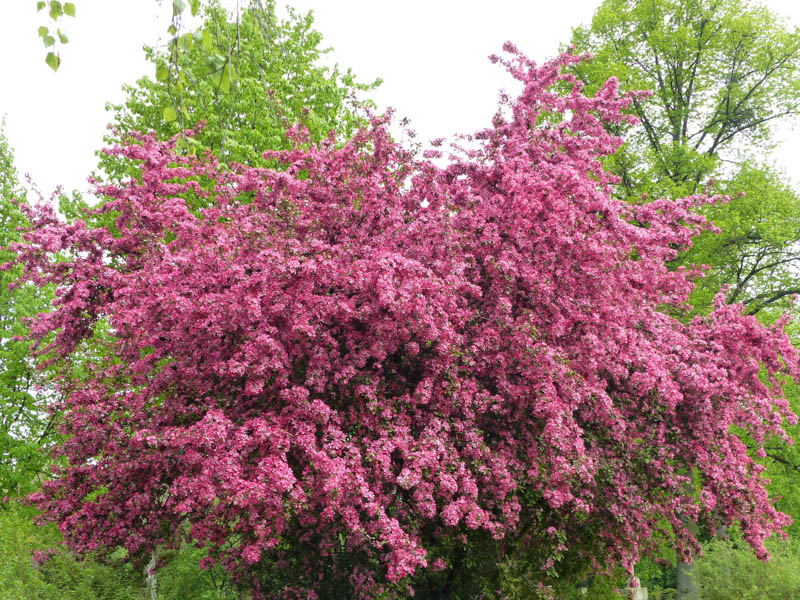Discovering issues with your Hawthorn tree? Learn to identify and address common problems such as borer infestations, aphids, fungal diseases, and environmental stressors.
Hawthorn, belonging to the genus Crataegus, encompasses a group of deciduous shrubs and trees prized for their deep green foliage, clusters of creamy white or pink, scented flowers in spring, and bright, berry-like fruits called haws that often persist into winter.
Native across temperate regions of the Northern Hemisphere, hawthorns are versatile, thriving in various soil types, though they prefer well-drained conditions and full sun to partial shade.
Their dense, thorny nature makes them excellent choices for privacy hedges or windbreaks, while their ornamental attributes, including spectacular fall foliage, add aesthetic value. The haws are a boon for wildlife, attracting birds and small mammals.
In addition to their ecological benefits, hawthorns are steeped in folklore and have been used in traditional medicine, particularly the berries, for heart-related conditions.
 Cratategus laevigata ‘Paul Scarlet’
Cratategus laevigata ‘Paul Scarlet’
Despite their hardiness, hawthorns are susceptible to certain pests and diseases, so proper care is essential.
Hawthorn leaves can exhibit various symptoms, including browning, curling, and spots. These issues often result from pests, diseases, or environmental stressors.
Hawthorn trunk or branch issues can manifest as holes, cracks, discolored areas, dead twigs and branches, often indicative of fungal diseases or pest infestations.
| Hardiness |
3 - 9 |
|---|---|
| Climate Zones | 2, 2A, 2B, 3, 3A, 3B, 4, 5, 6, 7, 8, 9, 10, 11, 12, 14, 15, 16, 17 |
| Plant Type | Shrubs, Trees |
| Plant Family | Rosaceae |
| Genus | Crataegus |
| Exposure | Full Sun, Partial Sun |
| Season of Interest |
Spring (Mid, Late) Summer (Early, Mid, Late) Fall |
| Height |
10' - 50' (3m - 15.2m) |
| Spread |
10' - 40' (3m - 12.2m) |
| Maintenance | Low |
| Water Needs | Average |
| Soil Type | Chalk, Clay, Loam, Sand |
| Soil pH | Acid, Alkaline, Neutral |
| Soil Drainage | Moist but Well-Drained, Well-Drained |
| Characteristics | Showy, Fruit & Berries, Fragrant |
| Tolerance | Drought |
| Attracts | Bees, Butterflies, Birds |
| Landscaping Ideas | Beds And Borders, Hedges And Screens |
| Garden Styles | City and Courtyard, Coastal Garden, Informal and Cottage, Prairie and Meadow |
| Hardiness |
3 - 9 |
|---|---|
| Climate Zones | 2, 2A, 2B, 3, 3A, 3B, 4, 5, 6, 7, 8, 9, 10, 11, 12, 14, 15, 16, 17 |
| Plant Type | Shrubs, Trees |
| Plant Family | Rosaceae |
| Genus | Crataegus |
| Exposure | Full Sun, Partial Sun |
| Season of Interest |
Spring (Mid, Late) Summer (Early, Mid, Late) Fall |
| Height |
10' - 50' (3m - 15.2m) |
| Spread |
10' - 40' (3m - 12.2m) |
| Maintenance | Low |
| Water Needs | Average |
| Soil Type | Chalk, Clay, Loam, Sand |
| Soil pH | Acid, Alkaline, Neutral |
| Soil Drainage | Moist but Well-Drained, Well-Drained |
| Characteristics | Showy, Fruit & Berries, Fragrant |
| Tolerance | Drought |
| Attracts | Bees, Butterflies, Birds |
| Landscaping Ideas | Beds And Borders, Hedges And Screens |
| Garden Styles | City and Courtyard, Coastal Garden, Informal and Cottage, Prairie and Meadow |
Create a membership account to save your garden designs and to view them on any device.
Becoming a contributing member of Gardenia is easy and can be done in just a few minutes. If you provide us with your name, email address and the payment of a modest $25 annual membership fee, you will become a full member, enabling you to design and save up to 25 of your garden design ideas.
Join now and start creating your dream garden!
Create a membership account to save your garden designs and to view them on any device.
Becoming a contributing member of Gardenia is easy and can be done in just a few minutes. If you provide us with your name, email address and the payment of a modest $25 annual membership fee, you will become a full member, enabling you to design and save up to 25 of your garden design ideas.
Join now and start creating your dream garden!